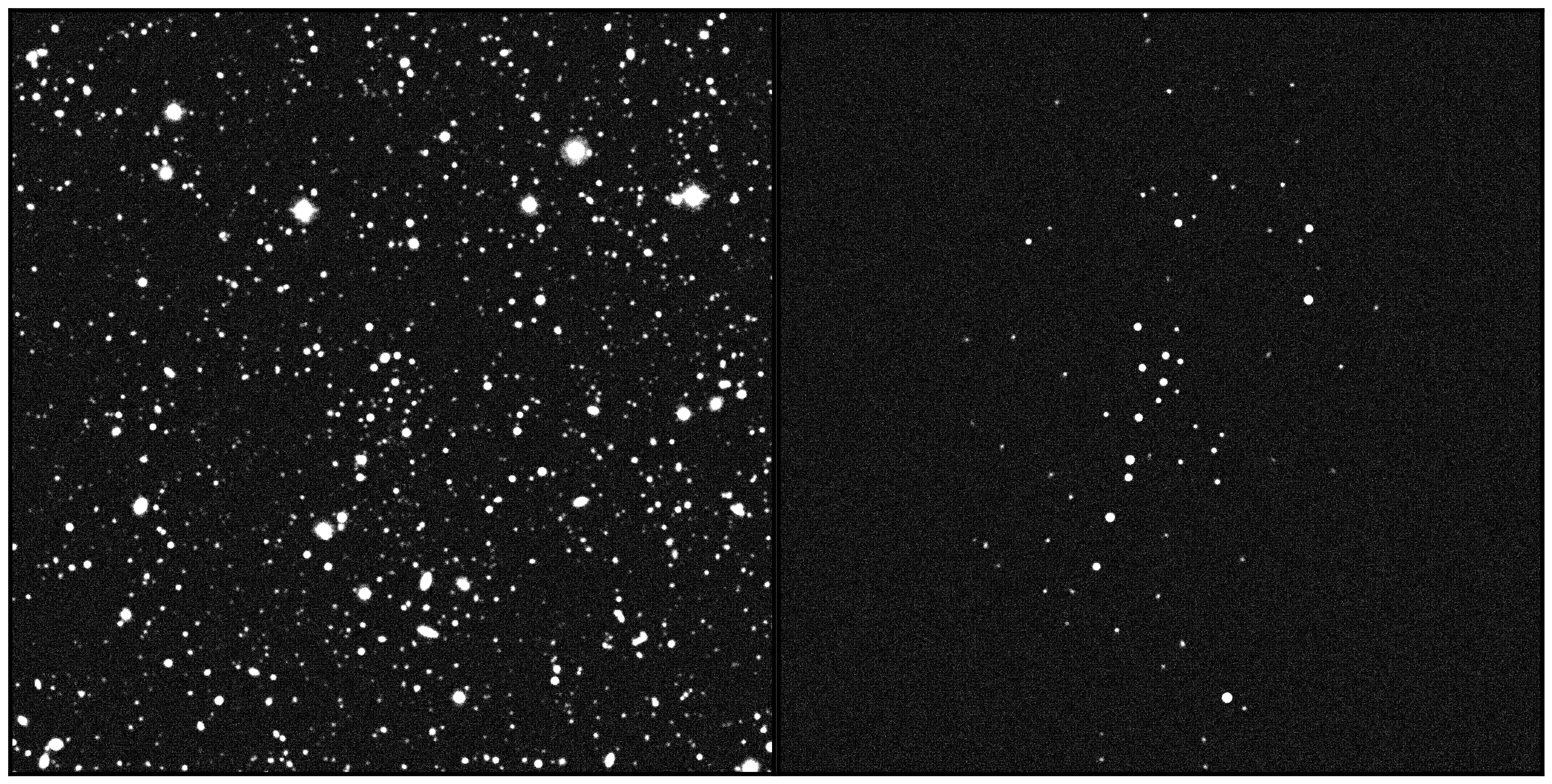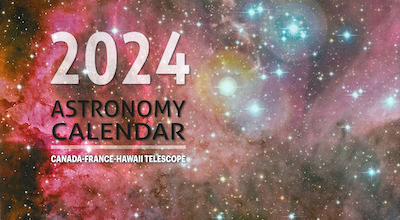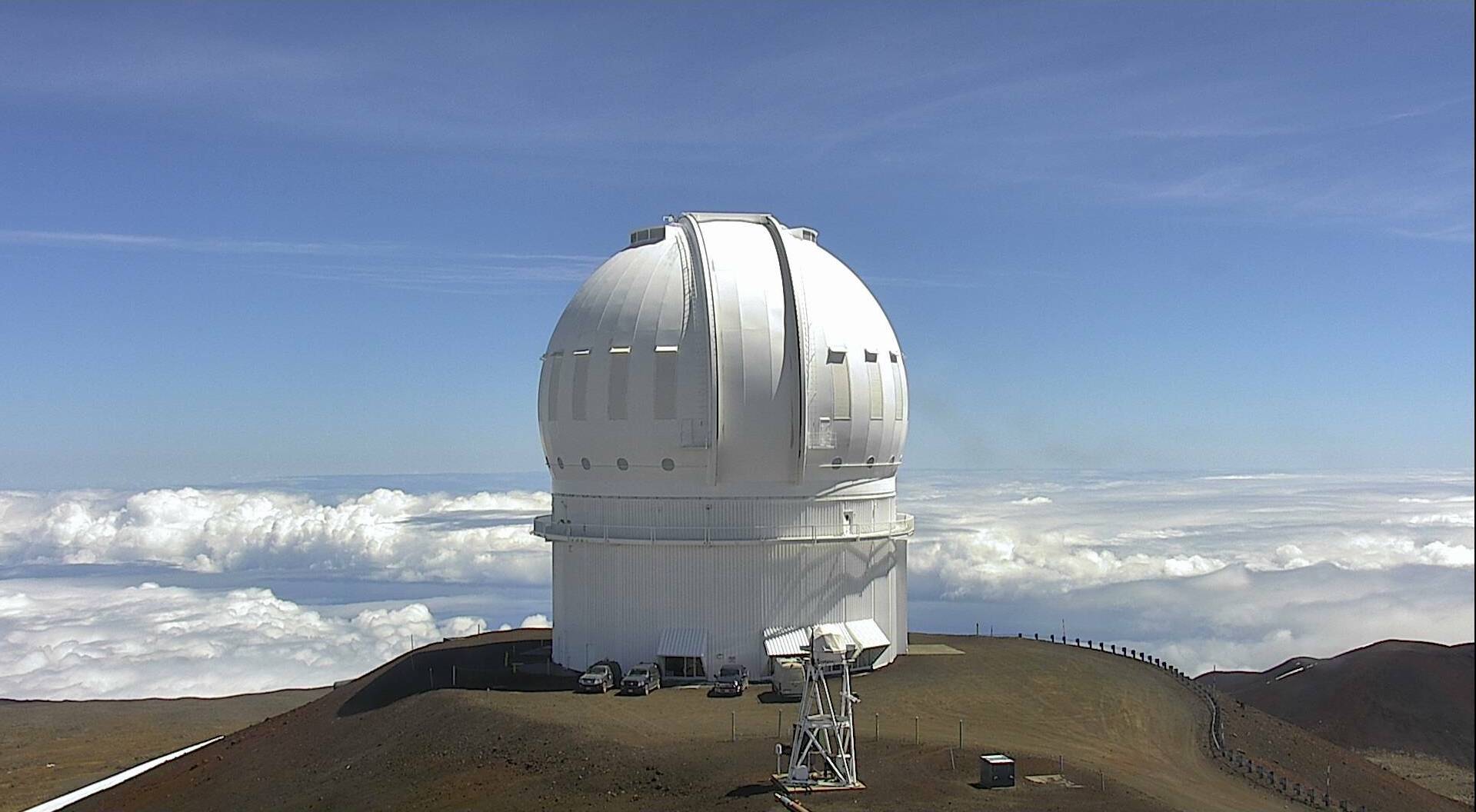New Insights into 'Oumuamau
First Detailed Kinematic Model of 'Oumuamua Sheds Light on its Nature

Visualization of the disk model for 'Oumuamua. To view the 45 second video of the team's simuluation, please click on the image credit: Mashchenko
|
'Oumuamua is the first interstellar minor body (out of only two; the second one is the recently discovered 2I/Borisov comet) to pass through the Solar system. It was detected by Pan-STARRS1 survey on 2017 October 19 as an extremely faint unresolved dot moving very fast across the plane of the sky. Soon many large telescopes, including CFHT, were tracking this object. From the very beginning researchers were puzzled by its strange and unique properties. To start with, the expectation (based on current theories of how planets form) was that the first interstellar visitor would be a classical comet - an icy body quickly developing large and bright coma and tail due to outgassing (evaporation of the surface ices driven by solar radiation). Instead, the object remained point-like and unresolved, as if it were a rocky asteroid. The second puzzle was the extreme brightness variations (by more than a factor of ten - more than any known minor body in Solar system) of 'Oumuamua. The popular explanation is that `Oumuamua is a strongly elongated cigar-shaped object spinning about its smaller axis, though a thin disk (pancake) rotating about its larger axis would produce the same effect. The latest puzzle was the discovery of non-gravitational acceleration exhibited by this object - the effect which is normally associated with strong outgassing in comets - combined with the fact that 'Oumuamua never showed any signs of outgassing. This conundrum let some researchers to suggest that 'Oumuamua is a solar sail from an advanced civilization, experiencing non-gravitational acceleration due to solar radiation pressure.
A recent paper in Monthly Notices of Royal Astronomical Society written by Sergey Mashchenko from McMaster University, Hamilton, Canada, shed some more light on the nature of 'Oumuamua. The researcher wrote a GPU-accelerated code which was used to generate hundreds of millions of physical models of the asteroid. By comparing the simulated light curves from the models with the observed light curve of 'Oumuamua two important conclusions were made.
First, it was discovered that to reproduce the specific timings of the most conspicuous features of the observed light curve - deep brightness minima - some torque (non-gravitational spin-up or spin-down) was required. This seems to have given more credibility to the idea that 'Oumuamua is a comet, as there are a few Solar system comets which exhibit both non-gravitational acceleration and non-gravitational torque (both driven by the same mechanism - strong outgassing from the surface). On the other hand, the lack of any outgassing detections from 'Oumuamua remains unexplained. One possible way out of this dilemma is to assume that the object is a solar sail with some parts brighter (more reflective) than others. Solar radiation would push the object as a whole, reproducing the observed non-gravitational acceleration, while the variable reflectivity would result in some spin-up or spin-down (torque) of the sail.
Second, it was shown that the popular cigar shape is very unlikely, as it would require an extreme fine tuning of the object's orientation. Specifically, the observer would only see large brightness variations if the cigar was repeatedly pointing at the Earth with a high accuracy. The disk (pancake) shape has no such issue, and is hence much more likely. Mashchenko showed that the disk can be potentially as thin as the solar sail requirement (less than 1 mm), though the best quality fit was obtained for a disk with 6:1 aspect ratio. Assuming albedo 10%, this would correspond to the physical size of 115x111x19 m.
"Our model implies that 'Omuamua is a pancake shaped comet that experienced some outgassing as it passed through the inner Solar System" said Sergey Mashchenko, author of the paper. "Too bad the comet is no longer observable, so I am afraid the lack of any signs of outgassing will remain an unsolved puzzle."
Additional information
Media Contact:
Mary Beth Laychak
Canada-France-Hawaii Telescope
808-885-3121
laychak@cfht.hawaii.edu
Science Contact
Sergey Mashchenko
McMaster University
syam@physics.mcmaster.ca




